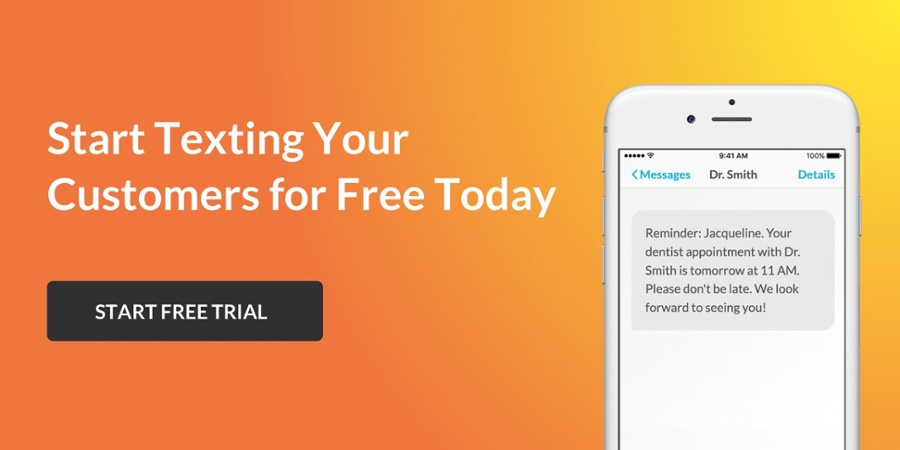Customer satisfaction is a key client perception metric. At its core, it describes how well clients feel a brand serves their needs.
Personalization, timely service, proactive support, feedback integration and loyalty rewards—are just a few concepts that businesses can leverage to increase customer satisfaction and build lasting client relationships.
In this guide, we’re exploring customer satisfaction in detail and breaking down five ways businesses can increase satisfaction to produce positive results (and returns).
Understanding Customer Satisfaction
It’s more important than ever for brands to lean into their customer satisfaction efforts. After all, satisfaction with service leads to repeat business and brand loyalty.
Recent data analyses reveal just why customer satisfaction is so important:
- 61% of consumers are willing to pay a minimum of 5% more if they know they’ll receive good customer service.
- 81% of customers report that a positive customer service experience improves their chances of making a repeat purchase.
- 95% of consumers say that easy access to customer service, self-service options, and representatives’ professionalism impact their brand loyalty.
Many factors contribute to customer satisfaction, including customers’ perceptions of:
- Product or service quality – Customers’ perceptions of the products or services they purchase from a brand
- Support quality – Clients’ evaluations of the level of support they receive from a brand’s service staff
- Expectations – The extent to which customers feel that a brand has met, exceeded or fallen short of their expectations (for a product/service or support)
Customer satisfaction is deeply connected to brand loyalty, retention and company reputation in the marketplace.
The Importance of Customer Satisfaction
Because customer satisfaction is a vital foundation for other areas of business success, it must be a top priority for brands. Satisfied customers are anecdotally and statistically more likely to become loyal brand advocates; the statistics above represent just a fraction of the data that support this correlation.
Customer satisfaction facilitates positive word-of-mouth messaging. When customers are satisfied, they’re more likely to:
- Recommend your brand to people they know
- Leave positive, public feedback (like Google reviews)
- Engage with your brand’s marketing content (e.g., social media content)
These activities alone can have a direct impact on revenue:
- Word-of-mouth advertising can help bring new customers into the fold
- Google reviews can increase your visibility and bolster your reputation online and IRL
- Marketing content engagement can shepherd clients into the sales funnel
Put simply, customer satisfaction and business growth go hand-in-hand.
5 Strategies to Increase Customer Satisfaction
So, how can brands increase customer satisfaction? Let’s explore five real strategies brands can implement to boost satisfaction (along with loyalty and revenue).
#1 Personalize the Customer Experience
Personalization is vital for today’s brands. A recent study revealed two key metrics about personalization that businesses should take to heart:
- 71% of customers expect brands to personalize their content and interactions.
- 76% of consumers are frustrated when companies don’t offer personalized experiences.
There are ways to personalize your marketing content and customer service experiences without having to start from scratch:
- Use customer data to make personalized product/service recommendations
- Create personalized customer service scripts for representatives
- Leverage precise segmentation to target customers with hyper-relevant content
Something as simple as a text message using a customer’s name or mentioning a product they viewed or purchased in the past could elicit a positive response. For a retail brand, that text could look like this:
Hi [Name]! We saw that you added [Item Name] to your cart. Check out in the next 24 hours and get 10% off your purchase with code [CODE].
#2 Offer Timely Service, Support and Updates
Customer service data collected reveals that:
- 52% of customers expect a brand to answer a question posed via a digital channel (like live chat, social media DM or SMS) within one hour.
- 93% of consumers expect a representative to respond to their query within 24 hours, no matter which channel they use.
- 83% of shoppers expect an immediate response when they contact a brand.
For today’s businesses, time is of the essence. But how can businesses speed up their service functions (like order fulfillment) and customer support processes?
- Automation – Automating some fulfillment functions or leveraging chatbots for self-service customer support, for instance, could help increase operational efficiency.
- Diversify channels – When it comes to customer support, brands can introduce (and staff) multiple channels to more evenly spread representatives’ workloads and speed up response times.
- Leverage data collection – By collecting customer data (like shipping addresses, payment preferences and contact info) and providing them to representatives during support interactions, brands can speed up portions of the customer service process.
#3 Proactively Resolve Customer Issues
Brands that leverage automation tools, introduce new channels and use customer data to provide more streamlined service have an increased capability to proactively resolve customer issues.
That could look like:
- Updating customers via text or email if their order is delayed
- Reaching out to clients to ask if they’re satisfied with their purchase after delivery
- Keeping customers informed of the status of their support tickets
Here are some sample messages brands could use for each of these scenarios:
Hi [Name]! Unfortunately, your order will arrive a little later than expected. We estimate that your item will arrive on [Date]. We’ll update you with any future changes.
Hello [Name]. We wanted to follow up on your purchase of [Item Name]. If you have any trouble with the item, please respond to this message; we’re happy to help!
Hi [Name]. Your support ticket number is [X]. We’ve sent your request to our customer service team, and we’ll respond within [#] hours via [channel]. Thank you for contacting [Company Name].
#4 Employ Surveys and Feedback Requests
Customer feedback and surveys are an excellent way to gauge customer satisfaction. They can also tell your customers that their opinion is valuable to your business, which can help them feel more connected to your brand.
Businesses have a variety of opportunities to send surveys or ask for feedback from current and prospective clients:
- After purchase
- After a customer support ticket resolution
- Through social media
Brands can also request Google reviews from current customers. Reviews benefit both:
- Your brand – Reviews can enhance your visibility and boost your word-of-mouth marketing efforts.
- Your customers – When you respond to Google reviews, you remind your customers that their feedback is important; this could positively impact customer loyalty.
Here’s a sample text brands can use to request a review or survey response from a customer:
Hi [Name]! Thank you for choosing [Company Name]. We hope you’re satisfied with your purchase of [Item]. Would you mind [filling out a survey/leaving a Google review] about your experience? The process should take just a few minutes, and your submission can help us provide even better service in the future. [Link]
#5 Reward Customer Loyalty
Brands can boost customer satisfaction among loyal, repeat customers by rewarding them for that loyalty. Some common loyalty rewards include:
- Coupons or discount codes
- Loyalty rewards points programs
- Everyday discounts for past clients
- Promotional items
Loyalty programs boil down to recognition. When companies recognize and reward repeat customers, they can make those clients feel like they’re important to the brand. Recognition is key to building a strong relationship with a customer: another building block for increased customer satisfaction.
Improve Customer Satisfaction by Connecting with Clients Through Text
Brands can improve customer satisfaction by offering personalization, increasing efficiency, taking a proactive approach, evaluating customer feedback and rewarding loyal clients.
Across all of these strategies, customer connection is critical. And your brand can reach clients where they spend the most time: on their smartphones. With SMS services from Textedly, your business can send promotional messages, provide a text-based customer support channel, collect Google reviews and so much more.
Start your 14-day free trial and reach your customers via text today.
Sources:




.png)